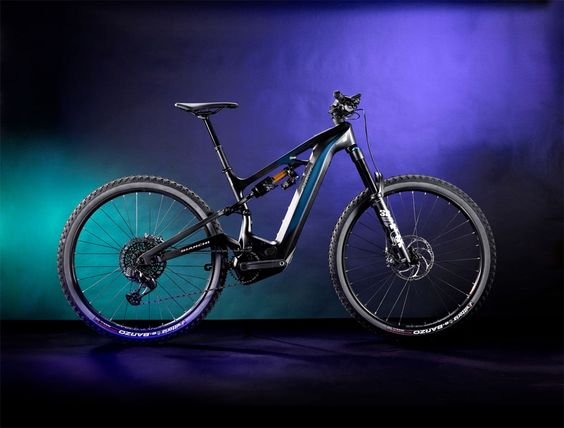
With the rapid development of connected and autonomous vehicles, the automotive industry is undergoing a significant transformation. These advancements bring numerous benefits, including enhanced safety, convenience, and new features that redefine the driving experience. However, they also introduce a new set of challenges — particularly in the realm of cybersecurity. As vehicles become more connected and reliant on software, they become potential targets for cyberattacks. In response, the field of automotive cybersecurity is evolving rapidly to keep up with these emerging threats.
The Growing Importance of Automotive Cybersecurity
Modern vehicles are no longer just mechanical machines; they are complex systems with millions of lines of code, multiple electronic control units (ECUs), and various communication networks. With the integration of advanced technologies like infotainment systems, autonomous driving capabilities, and Vehicle-to-Everything (V2X) communication, cars are increasingly connected to external networks, such as the internet, smartphones, and infrastructure.
This growing connectivity brings several potential vulnerabilities:
- Hacking and Unauthorized Access: Hackers can exploit vulnerabilities in a vehicle’s software or communication systems to gain unauthorized access, potentially controlling critical functions like steering, braking, or acceleration.
- Data Theft and Privacy Breaches: Modern vehicles collect vast amounts of data, including location, driving patterns, and personal information. Cyberattacks can lead to data theft and significant privacy breaches.
- Malware and Ransomware Attacks: Just like in traditional IT systems, vehicles can be infected with malware or ransomware, potentially locking users out of their vehicles or demanding payment to restore functionality.
- Supply Chain Vulnerabilities: Automotive manufacturers often rely on a complex supply chain of software and hardware components. A cyberattack on any part of the supply chain can compromise the entire vehicle system.
Current State of Automotive Cybersecurity
To understand how automotive cybersecurity will evolve, it is essential to look at the current state of the industry. Currently, many manufacturers and suppliers are taking cybersecurity seriously, with a focus on:
- Secure Software Development: Implementing best practices in secure coding, software testing, and vulnerability assessments during the development phase.
- Encryption and Authentication: Protecting data transmission and communication within the vehicle network and with external entities using encryption and authentication protocols.
- Over-the-Air (OTA) Updates: Providing the capability for vehicles to receive software updates remotely, allowing manufacturers to patch vulnerabilities and fix bugs quickly.
- Intrusion Detection Systems (IDS): Using IDS to monitor vehicle networks for signs of malicious activity or potential breaches.
Despite these efforts, the rapid pace of technological change, coupled with the growing sophistication of cyber threats, means that automotive cybersecurity must continue to evolve.
How Automotive Cybersecurity Will Evolve in the Coming Years
As the automotive industry advances, so will the methods and strategies for securing vehicles against cyber threats. Here are some key trends and developments that are likely to shape the future of automotive cybersecurity:
1. Enhanced Vehicle-to-Everything (V2X) Security
Vehicle-to-Everything (V2X) communication allows vehicles to communicate with each other (V2V), with infrastructure (V2I), with pedestrians (V2P), and with networks (V2N). V2X technology is crucial for the development of autonomous vehicles and intelligent transportation systems. However, this connectivity also introduces numerous cybersecurity risks.
To address these challenges, the following advancements in V2X security are expected:
- Advanced Encryption Standards: Stronger encryption protocols will be developed to secure data exchange between vehicles and external entities, ensuring that only authorized devices can communicate with each other.
- Digital Certificates and Authentication: Vehicles will use digital certificates and robust authentication mechanisms to verify the identity of other vehicles and infrastructure components before establishing communication.
- Real-time Threat Detection: V2X networks will incorporate real-time threat detection and response systems that can identify and mitigate cyber threats as they occur, minimizing the risk of successful attacks.
2. Artificial Intelligence and Machine Learning for Cybersecurity
Artificial Intelligence (AI) and Machine Learning (ML) will play a significant role in enhancing automotive cybersecurity. These technologies can be used to detect, analyze, and respond to potential threats faster and more effectively than traditional methods.
- Anomaly Detection: ML algorithms can be trained to recognize normal vehicle behavior and detect anomalies that may indicate a cyberattack, such as unusual data traffic or unauthorized access attempts.
- Adaptive Security Measures: AI-driven systems can adapt to new and evolving threats by continuously learning from past incidents and adjusting security measures accordingly.
- Predictive Analytics: AI and ML can be used to predict potential vulnerabilities and attack vectors based on historical data, allowing manufacturers to address these weaknesses proactively.
3. Zero Trust Architecture in Automotive Networks
The concept of Zero Trust Architecture (ZTA) will become more prevalent in automotive cybersecurity. In a Zero Trust model, no device, user, or network segment is trusted by default, even if it is inside the vehicle network. Instead, every interaction is verified, authenticated, and continuously monitored.
- Micro-Segmentation: ZTA will involve dividing the vehicle’s internal network into smaller segments, ensuring that even if one part of the network is compromised, the attack cannot easily spread to other parts.
- Continuous Monitoring and Verification: All communication and data exchange within the vehicle network will be continuously monitored for suspicious activity, and access controls will be enforced based on real-time analysis.
- Least Privilege Access: The principle of least privilege will be applied, meaning that each user, device, or application will only have the minimum level of access necessary to perform its function, reducing the attack surface.
4. Regulations and Standards for Automotive Cybersecurity
Governments and regulatory bodies around the world are becoming increasingly aware of the importance of automotive cybersecurity. As a result, new regulations and standards are expected to emerge to ensure that all vehicles meet a certain level of security.
- UNECE WP.29 Regulations: The United Nations Economic Commission for Europe (UNECE) has introduced the WP.29 regulations, which mandate that all new vehicles must meet specific cybersecurity requirements. These regulations will likely be adopted by more countries in the coming years, establishing a global standard for automotive cybersecurity.
- ISO/SAE 21434 Standard: The ISO/SAE 21434 standard, developed by the International Organization for Standardization (ISO) and the Society of Automotive Engineers (SAE), provides a framework for managing cybersecurity risks in the automotive industry. It covers the entire vehicle lifecycle, from design and development to production, operation, and decommissioning.
- Regional Regulations: In addition to global standards, individual countries and regions may implement their own regulations to address specific cybersecurity concerns. For example, the U.S. National Highway Traffic Safety Administration (NHTSA) and the European Union Agency for Cybersecurity (ENISA) are likely to develop guidelines and requirements for automotive cybersecurity.
5. Secure Over-the-Air (OTA) Updates
Over-the-air (OTA) updates are becoming a standard feature in modern vehicles, allowing manufacturers to remotely update software, fix bugs, and patch vulnerabilities without requiring the vehicle to visit a service center. In the coming years, secure OTA updates will become even more critical as vehicles rely more on software for their functionality.
- End-to-End Encryption: OTA updates will be secured using end-to-end encryption to ensure that only authorized updates are delivered to the vehicle.
- Verification and Validation: Before applying an OTA update, the vehicle’s system will verify and validate the update’s integrity and authenticity, ensuring that it has not been tampered with or corrupted.
- Redundant Systems: Redundant backup systems will be implemented to ensure that if an OTA update fails or is compromised, the vehicle can revert to a previous, safe state.
6. Collaboration and Information Sharing
As cyber threats continue to evolve, collaboration between automakers, cybersecurity experts, and government agencies will be essential. Information sharing about vulnerabilities, threats, and best practices will help create a more secure automotive ecosystem.
- Automotive Information Sharing and Analysis Centers (ISACs): Organizations like the Automotive ISAC, which facilitates collaboration and information sharing among automakers, suppliers, and cybersecurity professionals, will play a crucial role in enhancing cybersecurity.
- Public-Private Partnerships: Governments and regulatory bodies will work closely with the automotive industry to develop standards, regulations, and guidelines that promote best practices in cybersecurity.
- Cross-Industry Collaboration: The automotive industry will collaborate with other sectors, such as information technology and telecommunications, to leverage expertise and technologies that can enhance vehicle security.
7. Cybersecurity by Design
In the future, automotive cybersecurity will be built into vehicles from the ground up, rather than being added as an afterthought. This “security by design” approach ensures that cybersecurity is considered at every stage of the vehicle’s development and lifecycle.
- Secure Software Development Lifecycle (SSDLC): Automakers will adopt secure software development practices, such as code reviews, static and dynamic analysis, and penetration testing, to identify and address vulnerabilities early in the development process.
- Hardware Security Modules (HSMs): Vehicles will be equipped with hardware security modules that provide a secure environment for storing cryptographic keys and executing sensitive operations.
- Secure Boot Processes: Vehicles will use secure boot processes to ensure that only authorized software can run on the vehicle’s electronic control units (ECUs), preventing unauthorized modifications.
8. Post-Quantum Cryptography
As quantum computing technology advances, traditional cryptographic algorithms may become vulnerable to quantum attacks. To address this potential threat, the automotive industry will begin exploring post-quantum cryptography.
- Quantum-Resistant Algorithms: New cryptographic algorithms that are resistant to quantum attacks will be developed and implemented to secure vehicle communication and data.
- Long-Term Security Planning: Automakers will need to plan for the long-term security of their vehicles, ensuring that they remain secure even as quantum computing becomes more prevalent.
Conclusion
The future of automotive cybersecurity will be shaped by a combination of advanced technologies, regulatory standards, and collaborative efforts among stakeholders. As vehicles become more connected and autonomous, the need for robust cybersecurity measures will only grow. By adopting proactive strategies, such as AI-driven threat detection, Zero Trust architectures, and secure software development practices, the automotive industry can stay ahead of emerging threats and ensure the safety and security of drivers and passengers in the years to come.
Ultimately, automotive cybersecurity will evolve to become an integral part of vehicle design and operation, providing a safe and secure driving experience in an increasingly connected world.






